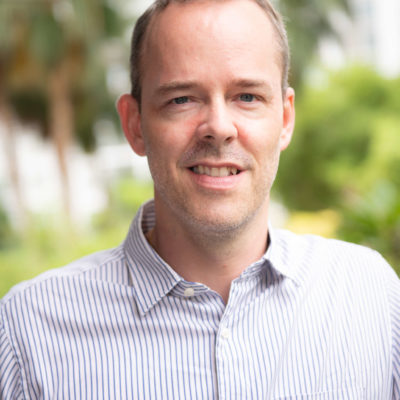Your agile transformation is failing?
You can see it in your organisation: the best-laid plans, the most dedicated teams, even highly experienced leaders aren’t able to achieve the agility they want.
People grow restless and unhappy and before long, you default to old, comfortable habits that are decidedly not agile. Then, when you’re approached by an agile consultant, you dismiss the way of working by saying something like, “we tried agile. It doesn’t work for us.”
Ever since Covid, the agile way of working grew in popularity. People saw that it was possible to be fast and efficient without compromising on quality and functionality. Furthermore, since agility fosters resilience, it stood out as an intriguing and promising framework.
As a result, people desired to be agile, but they don’t know how to get there. For as many successful transformations, there are an equal, perhaps higher number of failed ones.
These organisations might have tried everything, from training programs and workshops to organisational change management initiatives but nothing seemed to work.
So, what went wrong?
Reason 1: We're Agile, So, We're Done
One of the most common reasons why agile transformations fail is because the organisation tried to make a big change without first defining what it means to be agile.
Agile is more than just a process or a methodology; it’s an approach to work and life. It’s a mindset, a culture, a way of working and thinking that requires an ongoing commitment from everyone involved; from developers to product managers to executives and everyone else in between.
It’s not something you can just flip on or off when the mood takes you. There’s no situation in which you apply agile to a project, then revert to your modus operandi once the project is over.
You are either agile or you are not. There is no halfway house. It’s a total mindset change.
As soon as you begin your transformation journey with this understanding in mind, things will start falling into place much more easily than if you approached it as just another tool to use and discard.
And no one understands this better than an experienced agile coach, like Wavestone Asia’s Director, Laurent Basset.

Laurent Basset
Director
Wavestone Asia
Agile is not a goal that you reach, it’s a journey that transforms your organisation to be able to continually adapt to a changing environment, it’s a never ending journey!
Reason 2: We Haven't Found Our Own Version of Agile
The reason why your agile transformation is failing is that you haven’t found your own version of agile. Agile is more than just a methodology, a set of tools or practices.
Agile is a set of values and principles that guide how people should work together to deliver a product. It’s about iterative development, self-organising teams, customer collaboration and working together (with respect and empathy) as one team.
It is a whole, rather than the sum of its parts to pick and choose from.
If we think about it this way, then it becomes clear why so many organisations struggle with embracing agility: they try to force their existing organisational culture into an agile mould. A lot of organisations still work in the Waterfall way and that is largely incompatible with agile. Trying to combine both is like shoving a square peg into a circle.
This inevitably leads to failure because they are ignoring the underlying fundamentals behind both agile and their organisation’s culture.
Reason 3: Our Agile Leaders Don't Get It
Your agile transformation will fail if your leaders don’t get it and/or are unsupportive.
If you lack leadership that understands the value agile brings, then no amount of good will will help your team succeed. And if they’re not committed to that, they’ll eventually revert to old ways as soon as they hit a bump in the road (which is almost guaranteed to happen). It’s a natural reaction to default to your comfort zone when faced with uncertainty.
A good leader knows how important it is to embrace change wholeheartedly, and more importantly, how crucial it is for everyone else in their organisation to believe in those changes as well.
Without top management’s sponsorship, buy in and support, the transformation is not going to go far. Fortunately, this situation can be solved, despite its challenging path.

Andrew Coates
Manager
Wavestone Asia
If you are working in a team that has tried traditional ways of working, but delivery is slow or problematic, have the courage to talk to your leadership team. You can recommend trying agile ways of working for three months to gauge what improvements can be realized and ask for their support
Andrew Coates suggests to implement agile to achieve small things that have a big impact to visibly illustrate its benefits to your stakeholders. This might take a longer, more circuitous route, but you’ll at least be able to show value, rather than just talk about it.
Being agile is empowering to teams. It enables them to work productively toward a shared goal. It removes silos and creates an environment where obstacles are mere challenges to be overcome, not walls to bang one’s head against.
When this is demonstrated well, it is hard for stakeholders to ignore.
Reason 4: We Have Too Much Fear in the Organization
People are afraid. It’s natural, and we should accept fear as a part of life. Fear is after all, a necessary and vital part of success and survival.
The problem is that fear has become a catalyst for inaction in organisations because people don’t know how to manage it effectively. Fear can be debilitating if left unchecked, but it’s also an important motivator that helps keep us safe from danger and focused on our goals.
The key is learning to identify when your fears are irrational and acting in spite of them. It’s doing the same with others when they’re paralyzed by inaction or doubt.
Doing agile well requires the acceptance of failure and learning from that failure. The entire agile process involves experimenting and failing fast to learn valuable lessons as you work toward achieving your MVP (Minimum Viable Product).
This format also helps keep costs and resources down. After all, if you invalidate your hypothesis at stage one, there’s no reason to spend money or time to develop it.
This can only be done in a fearless organisation where experimentation is a norm.
If your organisation is averse to experimentation and prevents you from testing new ideas or taking chances, you’re not going to be agile.
Granted, in traditional work environments, it is possible that the innate feeling of fear is overly strong, having been cultivated over years and years.
A transforming organisation like Wavestone, understands this. We work carefully, patiently and with empathy to help de-program this characteristic and the learned behaviours for something resilient and sustainable.
Reason 5: We Don't Embrace Agile's Values
When we adopt agile, many treat it as a religion or a doctrine to dogmatically follow against everything. The problem with this is you get caught up with the small stuff. Things like timeboxes are stuck to with extreme prejudice or change is forced for the sake of it without first understanding why.
We want to follow all the principles, but in doing so, we fail to discover what is truly important for our organisation. Agile’s values are like a compass: they help us stay on course and keep us from getting lost along the way. Like guidelines, they help direct your team towards better outcomes only if everyone understands why these guidelines matter and are aligned on where they’re going.
It’s important to know these values by hard, but equally important to understand that the values are not a checklist you have to complete before moving on with your transformation project.
When people understand this, then they can embrace this understanding through their own experiences and know how things should work and not because someone told them they had too.
Do it but don't do it the wrong way and expect to succeed
You can’t expect to succeed if you don’t do it right.
If you want to improve your agile transformation and ensure its success, then it’s critical you get the fundamentals right.
Unfortunately, the key to a successful transformation lies not in your ability to execute perfectly on the processes.
It lies in culture and mindset.
It lies in developing a people-centric organisation driven by a desire to create value for customers by inculcating their feedback at every level. It lies in the organisation’s ability to foster collaborations between different departments and teams so that silos are eliminated.
It lies in having a shared goal to work toward.
Without that and a strong agile culture buoyed by a growth mindset, no amount of precise sprint planning, user story estimation, velocity, and retros will transform your organisation into a successful agile one.
Many transformations fail simply because implementing processes and tools are comparatively easier to culture and mindset.
After all, as Peter Drucker is known for saying, “culture eats strategy for breakfast.”
This is true for an agile transformation. If you don’t change the culture, your transformation will fail.
Conclusion
In conclusion, agility is more than just methodology.
It’s about a mindset that fosters creativity and adaptability, leading to faster product development for your customers. Therefore, it is extremely important to know why you transforming into an agile organisation as much as it is how to do it well.
The best way to begin your agile journey is by adopting its values. Focus on customer value over deliverables, embrace change as an opportunity for growth, share knowledge with one another and accept that failure is just another step toward success.
And finally, be brave enough to experiment all the time!
But it is not a one and done situation.
An agile transformation is unlike attending a five-day workshop and retaining only a portion of the knowledge when it’s over. It is as much a way of life as it is a north star of processes and tools to create highly motivated, happy and productive people.
When agile is done well, your staff, stakeholders and customers will be happy because the environment is positive, and business is going well.
If agile isn’t implemented well, you will know because you’ll eventually say something like, “agile doesn’t work for us.”
Have a question ?
The most successful agile transformations cannot be done without the expertise of an experienced agile coach and the backing of a powerful agile consultancy. If you are serious about undergoing agile transformation, we at Wavestone are happy to chat about the problems you face and how we can help.






